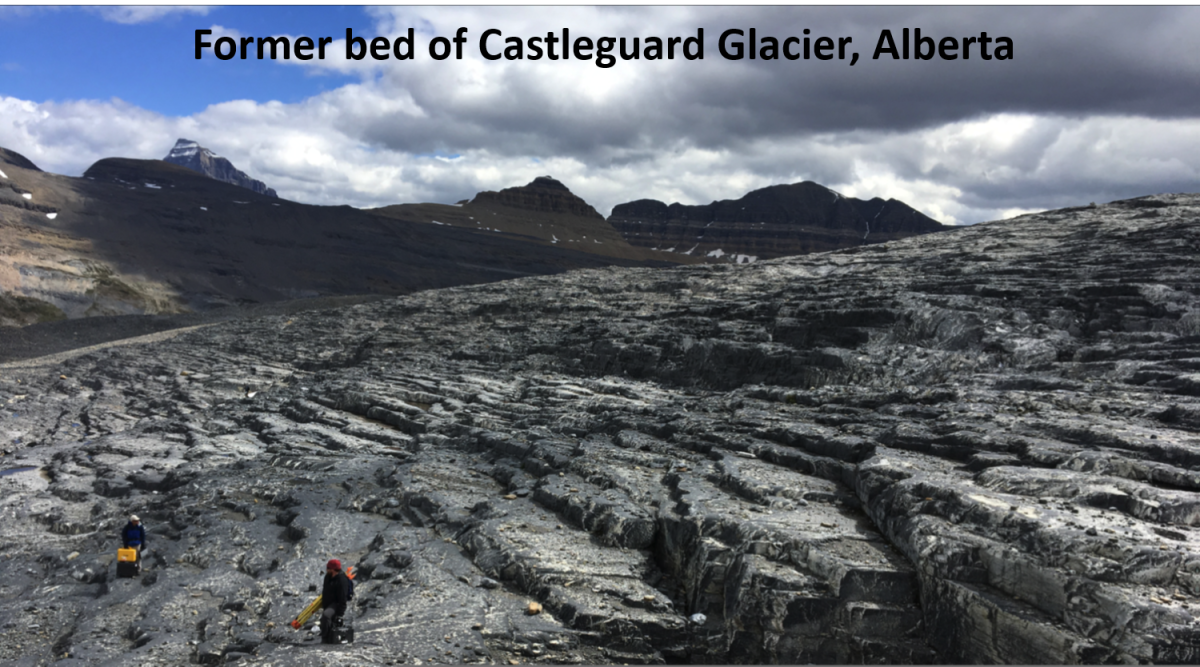Edward Silberman Award Ceremony & Distinguished Lecture by Neal Iverson
Presentation of the 2023 Edward Silberman Fellowship Award
Speaker: Neal Iverson, Distinguished Professor in the Department of Geological and Atmospheric Sciences at Iowa State University
Title: A universal slip law for glaciers?

Abstract: Ice discharge to the oceans from ice sheets and associated sea-level rise result largely from rapid slip of marine-terminating ice streams over their beds. Slip occurs over either rough bedrock (“hard” bed) or deformable till (“soft” bed). For each bed type, glacier flow models require a constitutive law that describes the relationship between shear stress and slip velocity. Experimental studies of ice slip over a soft bed and results of a three-dimensional numerical model of glacier slip applied to measured hard-bed topography point to a slip law that has a common form for the two bed types. This finding has the potential to simplify and improve estimations of glacier discharges to the oceans. Regardless of bed type, the sensitivity of slip velocity to increasing stress on glacier beds—caused for example by the melting of buttressing ice shelves in the warming oceans—is larger than currently assumed in most ice sheet models.
About: Neal Iverson is a Distinguished Professor in the Department of Geological and Atmospheric Sciences at Iowa State University. He received his Ph.D. from the University of Minnesota in 1989. His research focuses on glacier flow, glacial erosion and sedimentation, and genesis of glacial landforms. He is a recipient of the Geological Society of America’s Kirk Bryan Award and Arthur L. Day Medal.
Award Recipient: Jiaqi Li, PhD Candidate in Mechanical Engineering at the Saint Anthony Falls Laboratory

Abstract: Fluid flows, especially turbulent flows, are ubiquitous in the environment and critical for our daily life across various sectors, including healthcare and manufacturing. Our research focuses on a set of techniques to explore the dynamics of fluids and their interactions with particulates. At a larger scale, we conducted field experiments to measure the settling snow particles, using both planar and three-dimensional imaging techniques, alongside a snow particle analyzer. Our findings reveal preferential sweeping as a key mechanism in snow-turbulence interactions and demonstrate how snow morphology influences their fall behavior in low-turbulence environments, with implications for meteorological and climate predictions. On the smaller scales, we investigated the internal flow within evaporating sessile colloidal droplets. Through experimental observations and theoretical modeling, we elucidate the mechanisms governing particle deposition patterns after droplet evaporation, shedding lights on applications such as printing-based manufacturing and blood disease diagnostics. In addition, we have developed a holography-based technique for direct vorticity measurement. It has been applied to the study of elliptical vortex rings, revealing the vorticity fluctuations caused by their unsteady behaviors. This method has potential for directly measure the spatial and temporal vorticity variation of thin vortex tubes in turbulence, providing new insights into scale interactions and energy dissipation of these turbulent eddies.
About the recipient: Jiaqi Li is a PhD candidate in Mechanical Engineering at the St. Anthony Falls Laboratory of the University of Minnesota. He is currently working with Prof. Jiarong Hong on experimental fluid mechanics. His research focuses on understanding the interactions between turbulent flow and falling snow particles with various shapes for improving weather forecasting and climate modeling. He also worked extensively with digital inline holography, including developing a method for direct vorticity measurement and a snow particle analyzer for measuring snow size, shape, and density, as well as investigating internal flow and deposition patterns of sessile colloidal droplets. Before starting his PhD journey, Jiaqi received his bachelor’s degree from the University of Science and Technology of China in Energy and Power Engineering.
